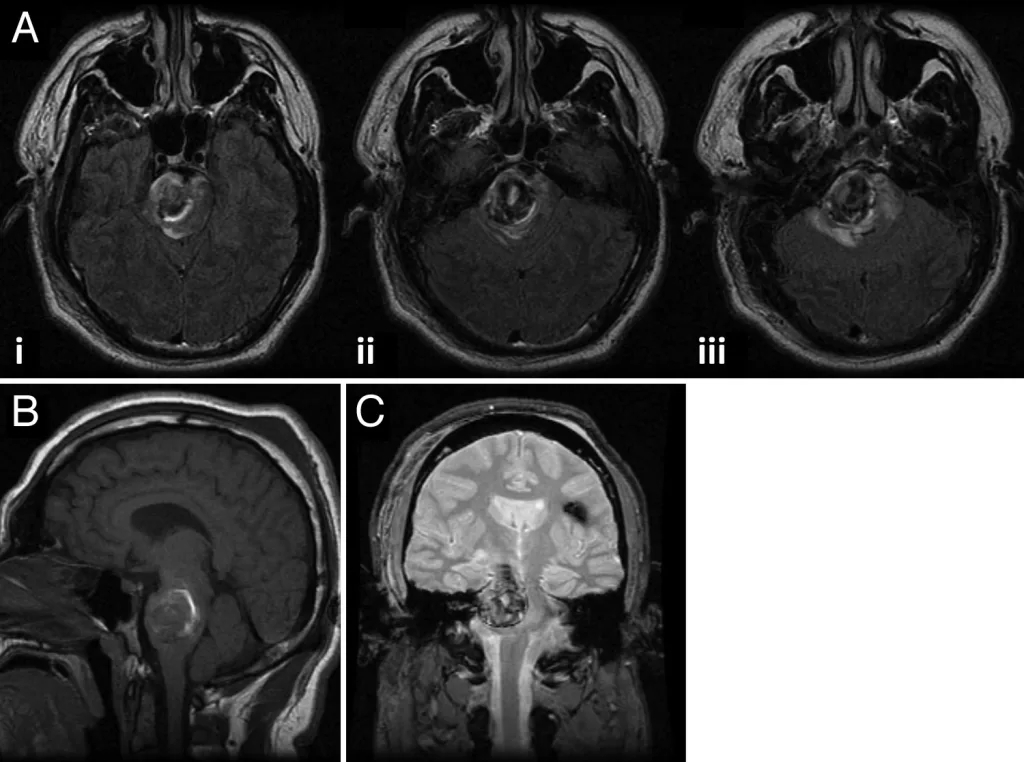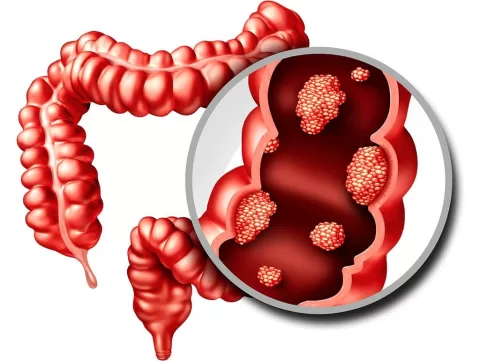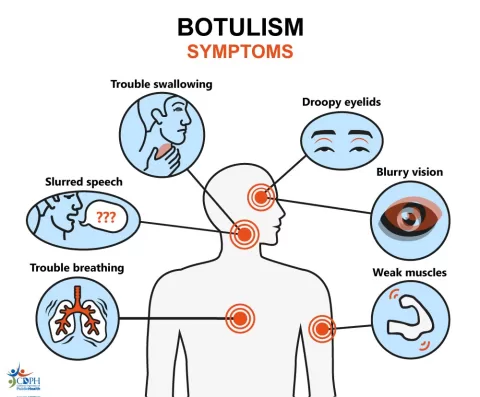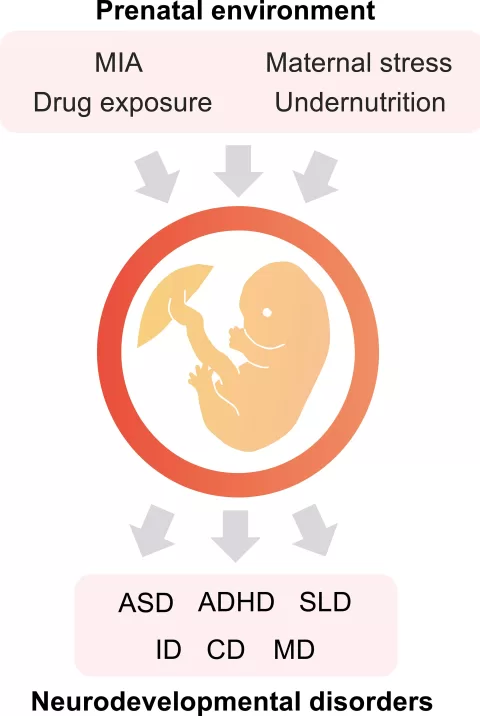Cavernoma in children is a critical health issue often overlooked due to its complex nature. These vascular anomalies, which involve a cluster of dilated blood vessels in the brain or spinal cord, can lead to a variety of neurological symptoms and complications. Pediatric cavernous malformations can present unique symptoms that differ significantly from those seen in adults, making early recognition and diagnosis essential. This article delves into cavernoma symptoms in children, critical management strategies, and available treatment options for pediatric cavernomas. Understanding and addressing these specialized neurological conditions can greatly enhance the quality of life for affected children.
Pediatric cavernous malformations, commonly referred to as brain or spinal cavernomas, represent a significant challenge within the scope of children’s neurological conditions. These abnormal clusters of blood vessels can disrupt normal cerebral function and potentially lead to serious complications. Symptoms of these malformations may include seizures and behavioral changes, requiring parents and caregivers to stay vigilant. Effective management of these pediatric blood vessel abnormalities is crucial, focusing on tailored treatment strategies that account for the unique developmental needs of children. This content aims to shed light on the complexities surrounding these malformations and their impact on young patients.
Understanding Symptoms of Cavernoma in Children
Cavernoma symptoms in children can often be misleading due to the subtlety of their presentation. Youngsters may manifest symptoms like unexplained behavioral changes, which might easily be dismissed as normal childhood mood swings. However, parental vigilance is crucial, as these behavioral shifts can indicate underlying neurological conditions. Other symptoms may include developmental delays that are confused with age-appropriate stages, necessitating thorough assessments by pediatricians familiar with cavernous malformations. These deviations in behavior and development serve as vital signals warranting further investigation.
Seizures are another significant concern related to pediatric cavernomas; they may present more commonly in children than in adults. Prompt evaluation is essential when a child experiences seizures, as this may prompt the investigation for underlying vascular malformations like cavernomas. Healthcare providers need to prioritize listening to parents who note these changes, as a child’s inability to articulate their symptoms may lead to delays in diagnosis and treatment. The early recognition of these symptoms forms the foundation for effective management and improved long-term outcomes.
Diagnosis Challenges for Pediatric Cavernous Malformations
Diagnosing cavernomas in children presents unique challenges distinct from adult cases. Due to the complexity and variability of children’s developmental stages, practitioners must rely on a combination of parental observations and clinical evaluations to accurately identify symptoms that may indicate the presence of cavernous malformations. The lack of communication skills typical in younger children often results in missed or misdiagnosed cases, underscoring the importance of a high index of suspicion for neurologists and pediatricians when assessing vague complaints.
In addition to clinical evaluations, modern imaging techniques such as MRI play a pivotal role in diagnosing pediatric cavernomas. Regular check-ups and imaging are vital for children at risk or those exhibiting potential symptoms. The interpretation of these images requires specialized knowledge, as the appearance of cavernomas can vary significantly among pediatric patients. Pediatric healthcare teams must adopt a thorough interdisciplinary approach to ensure accurate diagnosis and timely intervention, which is essential to mitigate the risk of serious complications.
Effective Treatment Strategies for Pediatric Cavernomas
Treatment for pediatric cavernomas must be meticulously tailored to each child’s specific needs. Unlike adults, who may benefit from standard treatment protocols, children require individualized assessments that consider their growth patterns, developmental status, and overall health. Surgical intervention is often needed to reduce the risk of hemorrhage and address neurological deficits. However, the decision to proceed with surgery must weigh the potential risks against the benefits, particularly given the delicate nature of children’s developing systems and the anatomical challenges presented by the location of the cavernoma.
Moreover, a multidisciplinary team involving neurosurgeons, pediatric neurologists, and rehabilitation specialists can greatly enhance treatment outcomes. This collaborative approach allows for a comprehensive evaluation of the child’s condition, facilitating informed decisions regarding surgery, medical management, or monitoring. Recent advances in treatment for pediatric cavernomas also emphasize the importance of careful long-term follow-up to track any changes in the condition, ensuring that children receive appropriate interventions at critical developmental stages.
Long-term Monitoring and Follow-Up Care
Long-term monitoring of children with cavernous malformations is essential to manage ongoing risks and complications effectively. Pediatric patients with prior surgical interventions or those monitored for progressive symptoms require regular imaging and clinical evaluations to track disease progression. This vigilance helps identify any changes in the stability of the cavernoma that could necessitate further intervention, particularly as the child’s brain develops and matures.
In addition to regular clinical assessments, engaging families in the self-monitoring process can enhance care. Parents should be educated on potential symptoms of concern, such as increasing headaches, changes in behavior, or developmental issues, which may indicate the need for urgent medical evaluation. Developing a structured follow-up plan ensures that healthcare providers remain vigilant in assessing the child’s neurological health throughout their development, adapting care as necessary based on evolving clinical statuses.
Family Support and Education for Managing Cavernomas
Family support plays a crucial role in the management of cavernomas in children. Educating families about the nuances of this condition, including potential symptoms and treatment options, empowers them to take an active role in their child’s healthcare. Resources and support groups can provide critical information and emotional support, fostering a community where families can share experiences and coping strategies. Understanding the complexities of cavernous malformations helps families navigate the medical system, facilitating timely consultations and interventions.
Additionally, parents must be encouraged to maintain open lines of communication with healthcare providers, ensuring that they feel comfortable discussing any concerns that arise regarding their child’s health. This partnership is vital in managing the challenges associated with pediatric neurological conditions. By emphasizing education and support, healthcare teams can optimize outcomes for children with cavernomas, allowing them to thrive despite their medical challenges.
Frequently Asked Questions
What are the common symptoms of cavernoma in children?
Cavernoma symptoms in children can include behavioral changes, developmental delays, and seizures. Unlike adults, children may find it difficult to express their symptoms clearly, making monitoring by parents and caregivers essential to identify any concerning signs.
How is a pediatric cavernous malformation diagnosed?
The diagnosis of pediatric cavernous malformations often involves imaging studies such as MRI scans, which reveal the abnormal vascular structure. Due to the vagueness of symptoms in children, healthcare providers rely on detailed family histories and observations to aid in diagnosis.
What treatment options are available for pediatric cavernomas?
Treatment for pediatric cavernomas typically includes a personalized approach, with options ranging from monitoring to surgical intervention. Surgery may be indicated to prevent complications like hemorrhaging, especially if the malformation is symptomatic or located in a critical area of the brain.
What long-term management is required for children with cavernous malformations?
Long-term management of cavernous malformations in children includes regular follow-up appointments and imaging studies to monitor the lesions. This ongoing surveillance is crucial for detecting changes that might necessitate further treatment as the child grows and develops.
How can parents help in the management of cavernoma in children?
Parents can play a vital role in the management of pediatric cavernous malformations by observing their child’s behavior and developmental milestones. Keeping track of any significant changes or symptoms and communicating these with healthcare providers ensures timely interventions and adjustments to the treatment plan.
| Key Topic | Details |
|---|---|
| Introduction | Cavernomas are vascular anomalies that lead to significant neurological complications in children. |
| Cavernomas Defined | Abnormal blood vessel formations that can cause hemorrhage and neurological symptoms. |
| Clinical Features | Symptoms in children may include behavioral changes, developmental delays, and seizures. |
| Treatment Considerations | A bespoke approach based on the child’s health, the location of the malformation, and symptoms. |
| Long-term Monitoring | Regular imaging and follow-ups are essential for managing potential complications. |
Summary
Cavernoma in children presents unique challenges that require early detection and a specialized approach to diagnosis and treatment. Unlike adults, children may exhibit vague symptoms that complicate their evaluation, including behavioral changes and developmental delays. It is crucial for parents and healthcare providers to monitor these signs closely and engage in regular assessments. Tailored treatment plans, often necessitating surgical intervention, play a vital role in preventing severe complications. Ongoing monitoring after treatment is equally important to ensure the child’s health and well-being as they grow. By prioritizing these considerations, we can significantly improve the outcomes for children affected by cavernous malformations.
The content provided on this blog (e.g., symptom descriptions, health tips, or general advice) is for informational purposes only and is not a substitute for professional medical advice, diagnosis, or treatment. Always seek the guidance of your physician or other qualified healthcare provider with any questions you may have regarding a medical condition. Never disregard professional medical advice or delay seeking it because of something you have read on this website. If you believe you may have a medical emergency, call your doctor or emergency services immediately. Reliance on any information provided by this blog is solely at your own risk.








